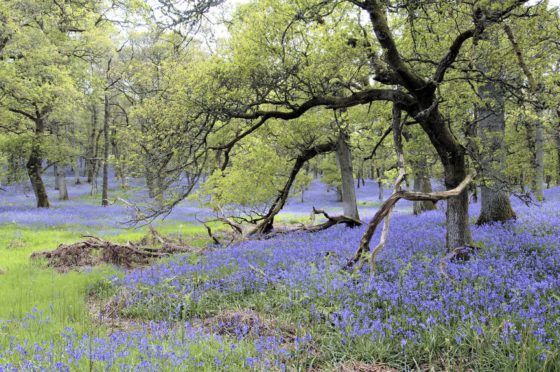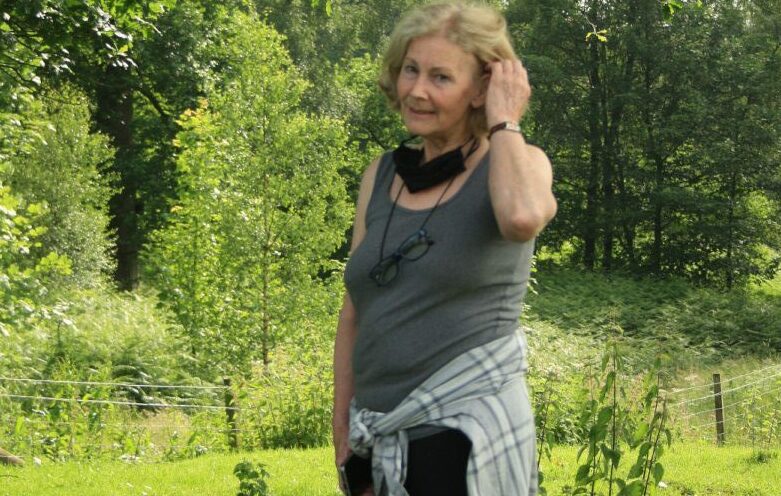
When Daye Tucker planted stands of new native trees, she hoped they would soon match the old woodland on her Stirlingshire farm.
Those woods have carpets of bluebells and other small flowers, brambles, shrubs such as holly and climbers such as ivy, a rich understory that feeds birds and insects and makes the place feel alive.
But 15 years on, though the trees are thriving, there is little sign of those wild flowers and other plants in much of the 18 acres or so she planted. And she is not alone in finding this key woodland layer has not been filled.
Government schemes in Scotland have planted half a million acres of mainly native trees in the past 50 years. In the last 30 years alone over £100m has been paid in government grants for such planting, aimed at promoting nature and more recently to be a buffer against the climate crisis.
But experts now say much of the new planting – especially that on former farmland – has failed to turn into proper woodland, and without the essential undergrowth, the plantations do less to boost flagging biodiversity and store carbon.
Now government nature agency NatureScot has had to step in to teach land managers such as Tucker – farmers like her, estate owners, and community groups – how to get more of the understory into the plantations, to turn them into proper woods.
“Trees without that essential understory are like a sandwich without the filling,” says NaturesScot woodland advisor Kate Holl. “The things that we planted as woodland have not become woodlands. Forty years down the line they are just plantations of trees, basically.
“When we started doing this big time, creating native woodland, we genuinely thought that was what we were doing: we would plant the trees and all the other things would just come along and move in but for a range of reasons woodland plants have just not come.”
Holl says central to the problem is that many of the newly planted areas are on ground that has been used for crops or grazing for many generations, meaning there is no residual seed-bank of flowers and other plants in the soil.
Wild plants have not naturally colonised much of the new native woodlands because existing woods and stands of new trees are separated by fields, homes, and other environments. Seeds from the plants struggle to spread across what is known as fragmented habitat.
NatureScot has produced a new guide on introducing woodland plants to the new plantations, and hosted a webinar for land managers to learn more about what can be done.
That includes taking plants and collecting seeds from healthy long-standing woodlands which can be planted in small areas of the new trees. They can then spread within the plantation to turn it into proper woodland. If local sources are not available, specialist dealers can provide seeds grown from Scottish wild plants. Improving the understory could mean 30% more carbon being stored in the new woodlands, and a big boost for biodiversity, according to Holl: “There’s a whole load of species that depend on the filling, and if the filling’s not there then they’re not there.”
She says although there is no obvious financial return for land managers who boost the understory in new woods, a habitat in good condition will perform better: “There is no data on this but it’s just intuitive, if the ecosystem is working better as an ecosystem, the individual components are going to be doing better.”
Tucker started planting trees around 15 years ago on her 400 acres near Killearn. The trees are doing well, she says, and some wild plants have appeared among them where they are close to older woodland.
But much of the ground below the new plantings is covered in the grasses that used to feed livestock on this ground, and little else.
She attended the web session run by guide co-author Rick Worrell to learn more about planting understory plants, and said: “I’ve been really disappointed in the failure of the understory to regenerate in the new woodland.
“I think nature now needs a bit of help and we have to get in there, scrape away a bit of ground and plant small areas.”
Woodland expert Worrell said the guide shows land managers that by gathering seeds themselves they could develop the understory without great expense.
“By using local seed they can maintain diversity in the gene pool of the plants.
He added: “If we had had our head screwed on a bit more we would have thought that this was likely to be a problem – we go to all this effort to move trees to a place where we want a wood, but why do we expect the plants to do that without help?”

Enjoy the convenience of having The Sunday Post delivered as a digital ePaper straight to your smartphone, tablet or computer.
Subscribe for only £5.49 a month and enjoy all the benefits of the printed paper as a digital replica.
Subscribe © Supplied
© Supplied